
Giovanni Michelotti was one of the most prolific designers of sports cars in the 20th century. His notable contributions were for Ferrari, Lancia, Maserati and Triumph marques. He was also associated with truck designs for Leyland Motors, and with designs for British Leyland after the merger of Leyland and BMC.

Gruppo Bertone, commonly known as Bertone, was an Italian industrial design company which specialized in car styling, coachbuilding and manufacturing. It formerly was also a car manufacturing company. Bertone styled cars for Abarth, Alfa Romeo, Aston Martin, BMW, Citroën, Ferrari, FIAT, Iso, Lancia, Lamborghini, Mercedes-Benz, Opel, and Volvo, among others. In addition, the Bertone studio was responsible for two of the later designs of the Lambretta motorscooter.
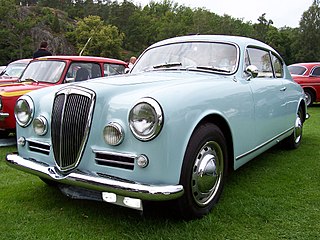
A grand tourer (GT) is a type of car that is designed for high speed and long-distance driving, due to a combination of performance and luxury attributes. The most common format is a front-engine, rear-wheel-drive two-door coupé with either a two-seat or a 2+2 arrangement. Grand tourers are most often the coupé derivative of luxury saloons or sedans. Many iconic car models, such as the Ferrari 250 GT, Jaguar E-Type, and Aston Martin DB5, are considered classic examples of gran turismo cars.

Zagato is a coachbuilding company. The design center of the company is located in Terrazzano, a village near Rho, Lombardy, Italy.
Vignale is the luxury car sub-brand of Ford Motor Company used in automobiles sold in Europe. The former company Carrozzeria Alfredo Vignale was an Italian automobile coachbuilder established in 1948 at Via Cigliano, Turin, by Alfredo Vignale (1913–69). After its founder's death in 1969, Carrozzeria Vignale was acquired by De Tomaso. The studio ceased operation in 1973, but ownership of the name was taken over by Ford Motor Company.

Carrozzeria Scaglietti was an Italian automobile design and coachbuilding company active in the 1950s. It was founded by Sergio Scaglietti in 1951 as an automobile repair concern, but was located across the road from Ferrari in Maranello outside Modena, Italy.
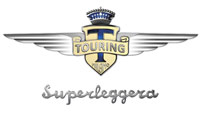
Carrozzeria Touring Superleggera is an Italian automobile coachbuilder. Originally established in Milan in 1925, Carrozzeria Touring became well known for both the beauty of its designs and patented superleggera construction methods. The business folded in 1966. In 2006 its brands and trademarks were purchased and a new firm was established nearby to provide automotive design, engineering, coachbuilding, homologation services, non-automotive industrial design, and restoration of historic vehicles.

The Ferrari 250 is a series of sports cars and grand tourers built by Ferrari from 1952 to 1964. The company's most successful early line, the 250 series includes many variants designed for road use or sports car racing. 250 series cars are characterized by their use of a 3.0 L (2,953 cc) Colombo V12 engine designed by Gioacchino Colombo. They were replaced by the 275 and 330 series cars.
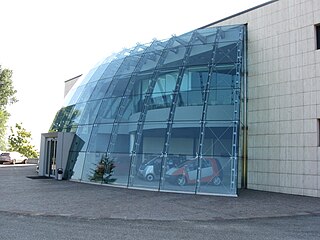
Pininfarina S.p.A. is an Italian car design firm and coachbuilder, with headquarters in Cambiano, Turin, Italy. The company was founded by Battista "Pinin" Farina in 1930. On 14 December 2015, the Indian multinational giant Mahindra Group acquired 76.06% of Pininfarina S.p.A. for about €168 million.
Carrozzeria Allemano was an automobile coachbuilder in Turin, Italy, owned by Serafino Allemano.

Franco Scaglione was an Italian automobile coachwork designer.

The Ferrari 212 Export was a sports racing car produced by Ferrari in 1951–1952. The 212 Exports won Tour de France automobile, Giro di Sicilia, Coppa della Toscana, 10 Hours of Messina and other motor races throughout its career. It was meant to be a sports car available for oversea markets.

Carrozzeria Castagna is an Italian coachbuilding company based in Milan, Italy.

Aldo Brovarone was an Italian automobile designer and the chief stylist with Carrozzeria Pininfarina (1974-1988) – widely known for a prominent range of work including the Dino 206 GT, Lancia Gamma Coupé and the Peugeot 504 (sedan).

Maggiora was an Italian coachbuilder from Moncalieri near Turin. They produced the Fiat Barchetta and the Lancia Kappa Coupé which was designed by Centro Stile Lancia. In 2003 the company was closed.
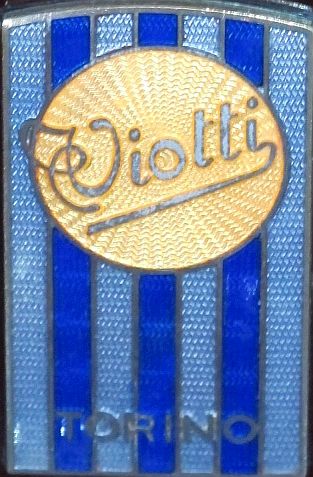
The Carrozzeria Viotti was an Italian coachbuilding company active between 1921 and 1964. The company was founded in Turin, Italy by Vittorio Viotti. Designers like Frua and Mario Revelli worked for the company. It was the first coachbuilding company in Italy to set up a proper production line.

The Abarth 205A Berlinetta was a coupé sports car, also known as the Abarth 205A Monza built by Austrian born tuning expert Carlo Abarth in 1950. It was a development of the Abarth Cisitalia 204A but with a new platform chassis, still using the engine and other components from the Fiat 1100 B/E. Only three 205As were finished in 1950; chassis numbers 101, 102, and 103, but an additional car was built in 1953 with an extravagant Ghia body. Slow sales meant that for the next few years Abarth chose to focus on building his exhaust and tuning business, allowing competition and car manufacturing take a backseat. In 1955, the 205A was succeeded by the 207A Spyder and its derivatives.

Stabilimenti Industriali Farina was an Italian automotive coachbuilder established by Giovanni Carlo Farina (1884–1957) in 12 Corso Tortona.
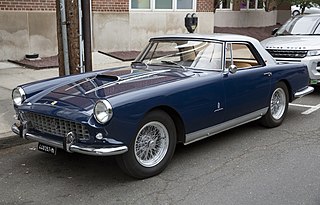
The Ferrari 250 GT Coupé represented a series of road-going, grand touring cars produced by Ferrari between 1954 and 1960. Presented at the 1954 Paris Motor Show, the 250 Europa GT was the first in the GT-lineage. The design by Pinin Farina was seen as a more civilised version of their sporty Berlinetta 250 MM. Series built cars were an answer to the wealthy clientele demands of a sporty and luxurious Ferrari Gran Turismo, that is also easier to use daily.

The Abarth Cisitalia 204A was the first product of the recently founded Abarth & C.. As part of a deal in which Abarth took over the liquidated Cisitalia assets, the erstwhile Cisitalia 204 was marketed under both the Abarth and Cisitalia brands. Abarth received two complete 204 Spiders and two or three unfinished chassis in various states of completion; in total six 204A were built. Abarth went on to develop several more cars derived from the Fiat 1100-based Cisitalia 204, following up with the Abarth 205A Berlinetta, Abarth 207A Spyder, Abarth 208A Spyder, and the Abarth 209A Coupé.






















